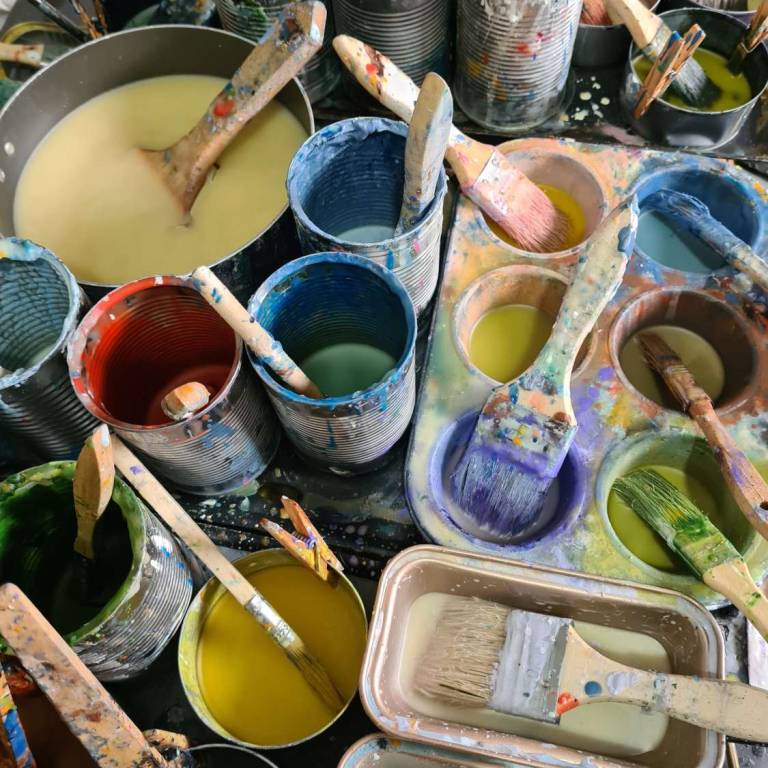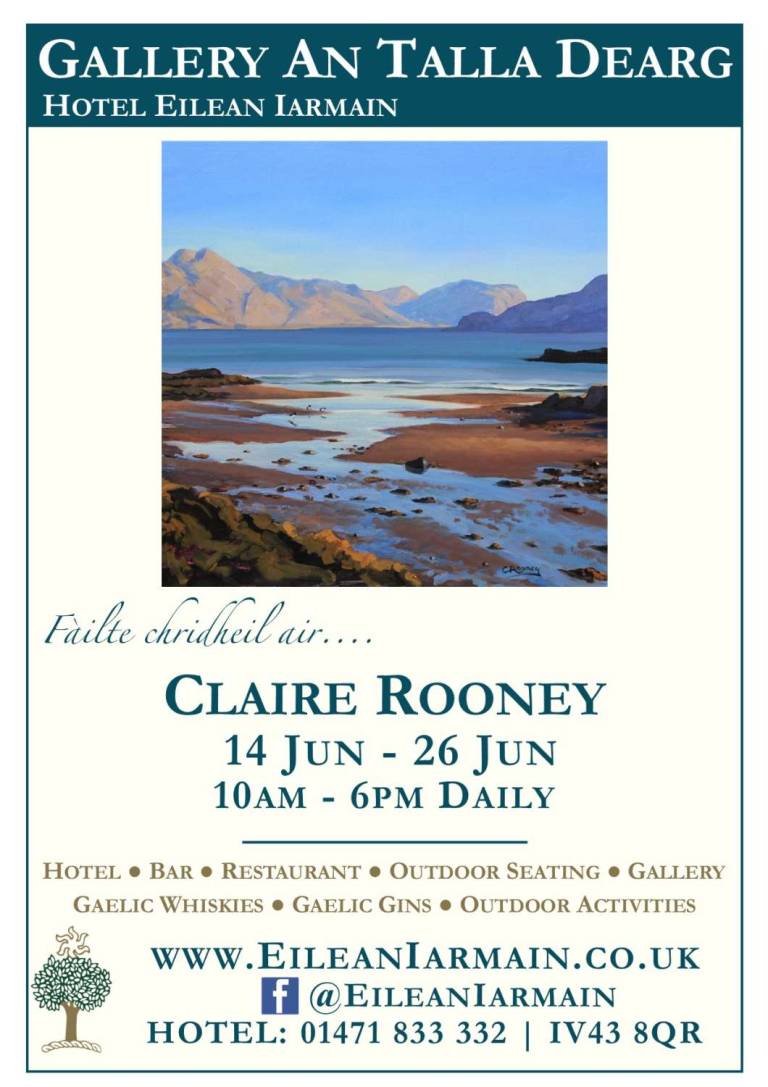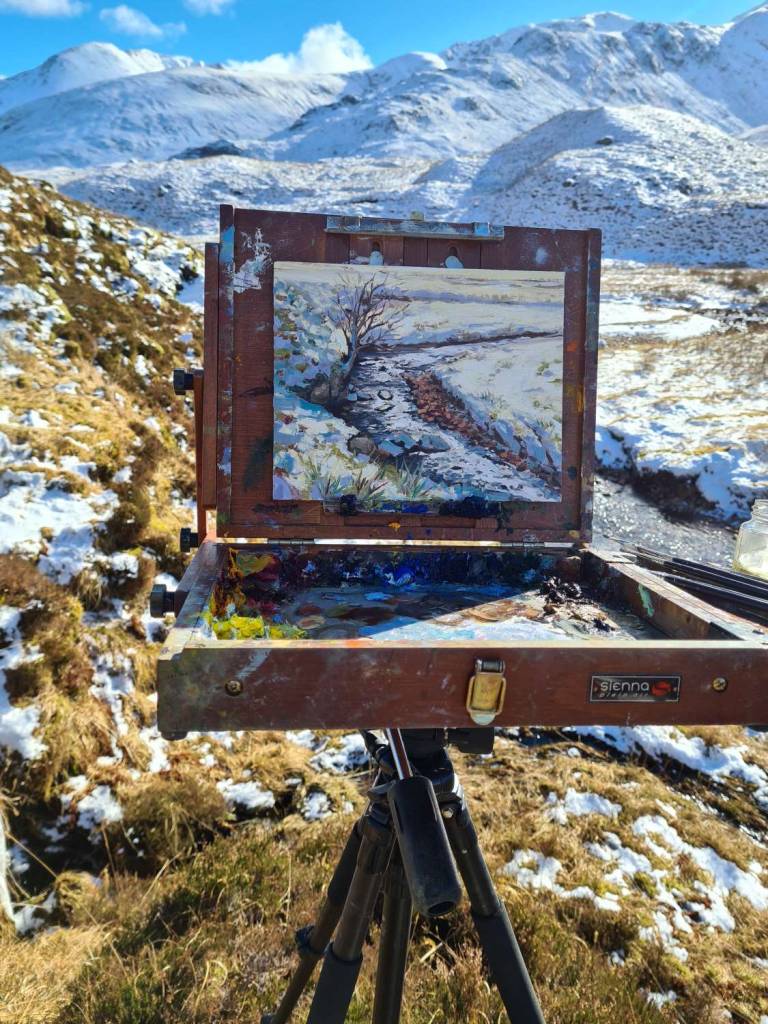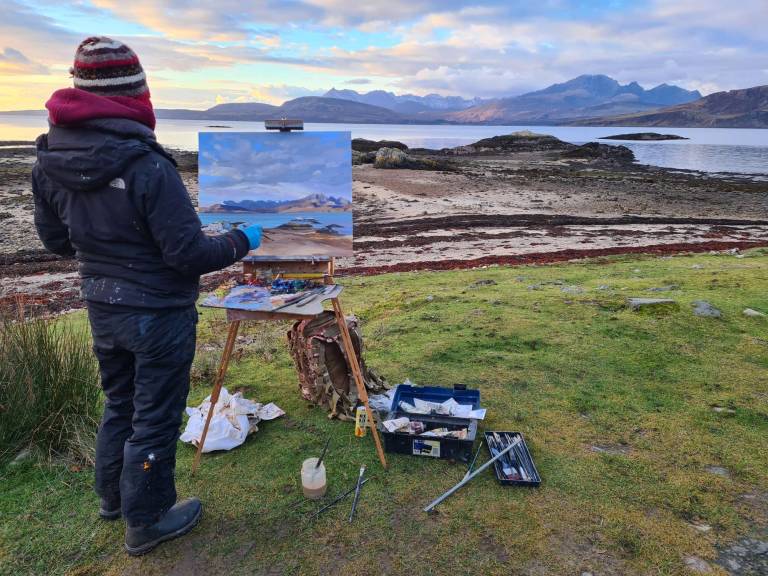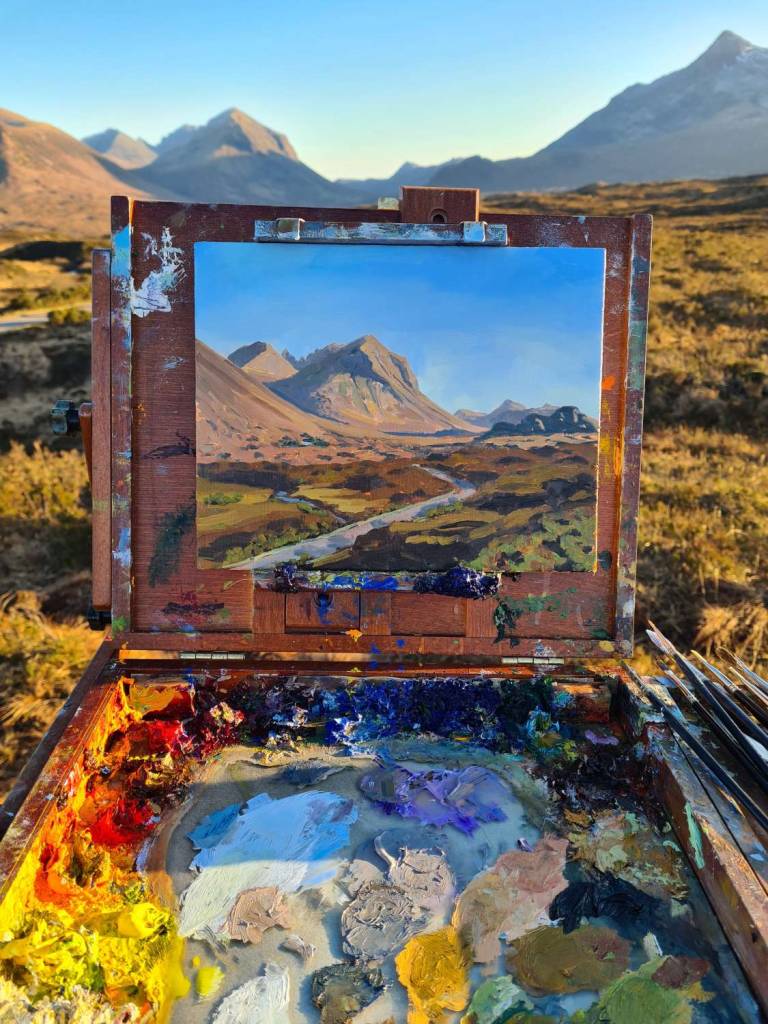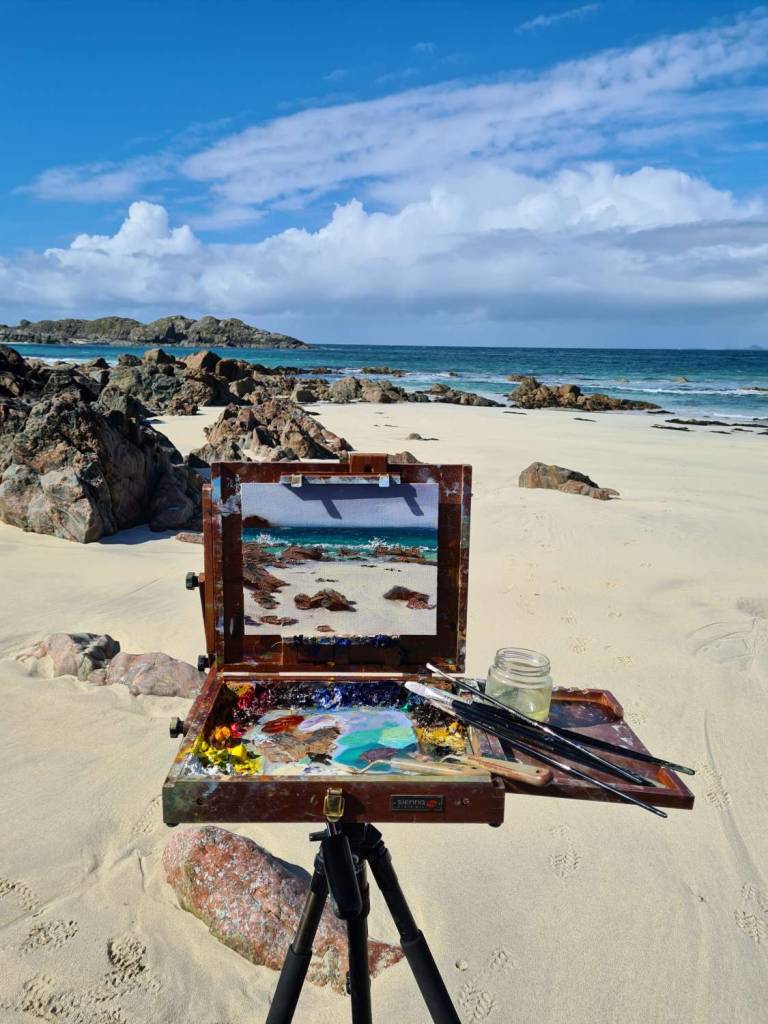To paint using beeswax, I will first make an encaustic medium by melting the wax with dammar resin. This increases the melting point of the wax, giving the medium durability. The encaustic medium is coloured using various coloured pigments, I have some natural earth powder pigments that I cherish. Using hotplates to keep the different colours molten, they are then painted on to a cradled wooden surface. Layers are fused using a variety of hot tools, my favourites being a blow torch, hot iron and stylus for details. The wax can be carved and shaped, textured, or smooth as glass, objects and images can be inlayed. Building the paint up in layers allows light to travel through the wax, giving a real lustre and richness to the work. It;s such a beautiful medium to work with.
A Short History of Encaustic
Encaustic painting is an ancient technique dating back to the Greeks who used wax to caulk ship hulls. Pigmenting the wax gave rise to the decorating of warships. Encaustic was a slow, difficult technique, but the paint could be built up in relief and the wax gave a rich optical effect to the pigment. These characteristics made the finished work startlingly life-like. Moreover, encaustic had far greater durability than tempera, which was vulnerable to moisture. Perhaps the best known of all encaustic work are the Fayum funeral portraits painted in the 1st-3rd centuries A.D. by Greek painters in Egypt and can be seen in Excellent condition to this day.
